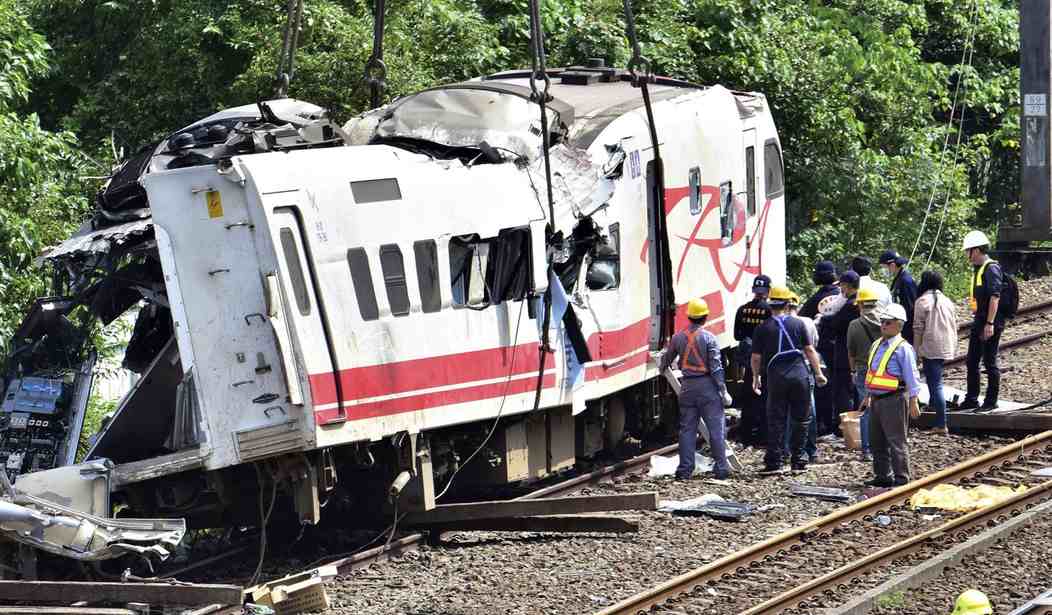While it pains me to say it, Pete Buttigieg may have been right. There have been more than a few train derailments in the news lately and last night another one took place in a remote area of western Arizona near the California border. This train was also reportedly carrying toxic chemicals, but thankfully, no leaks have been reported thus far. The train went off the rails at the Topock Bridge, located north of Lake Havasu City. Even if there were some sort of leak taking place, it’s unclear how many people would be affected because this place is truly in the middle of nowhere. A close inspection using Google Maps suggests that there isn’t much in the way of human habitation in the surrounding area. (NY Post)
A train carrying hazardous materials derailed in northern Arizona late Wednesday evening, according to local officials.
The Mohave County Sheriff’s Office said the train derailed at the Topock Bridge near Interstate 40, but there was no indication that the potentially dangerous chemicals spilled.
Authorities have not yet reported any injuries or deaths relating to the derailment.
With luck, the derailment at the Topock Bridge will be cleaned up and service will be restored quickly without any environmental impact or health hazards for people in the area. But it’s worth asking if we’re getting more derailments these days or if we’re just paying more attention to them because of what happened in East Palestine, Ohio. Popular Mechanics did a deep dive into the subject recently and it appears that it’s more a case of the latter.
Their research showed that there were 1,087 reported derailments in 2021 alone. That’s an average of just under three per day. And the actual number is much higher than that. In order for the Department of Transportation to categorize an accident as a “derailment” it has to cause either a particular amount of financial damage or result in injuries or deaths of people. When a couple of cars go off the rails by a foot or so, that will shut down traffic on the rail line for a while, but it’s not logged as a derailment. That figure also does not include all train accidents. A train can strike an automobile at a crossing, but if none of the cars go off the rails and nobody on the train is injured, it’s not counted in the total derailment numbers.
There are a variety of causes listed for derailments, but no quick, practical way to significantly reduce the numbers is available. For trains traveling more than ten miles per hour, the most common cause is worn or damaged rails, broken welding joints and similar mechanical failures. Wrecks happening at less than ten miles per hour are most often caused by human error in navigation or track adjustments.
In terms of controlling spills of hazardous chemicals, there is one possible improvement available. Oil spills at sea were vastly reduced after the government required all oil tankers to have double hulls following the Exxon Valdez spill in 1989. Similarly, fuel trucks on the highways must also have two layers of shielding. But federal regulations for rail cars carrying tanks of fuel or other chemicals appear to lack such a requirement, instead calling for the tank to have a rubber lining on the interior. Double hulls would be heavier and more expensive, but they might be worth it in terms of safety.
In any event, let’s hope that the Arizona derailment doesn’t lead to any such concerns. But Mayor Pete shouldn’t simply accept that these types of crashes and spills “just happen.” Improvements are possible and he is the person who is allegedly in charge of such things.









Join the conversation as a VIP Member